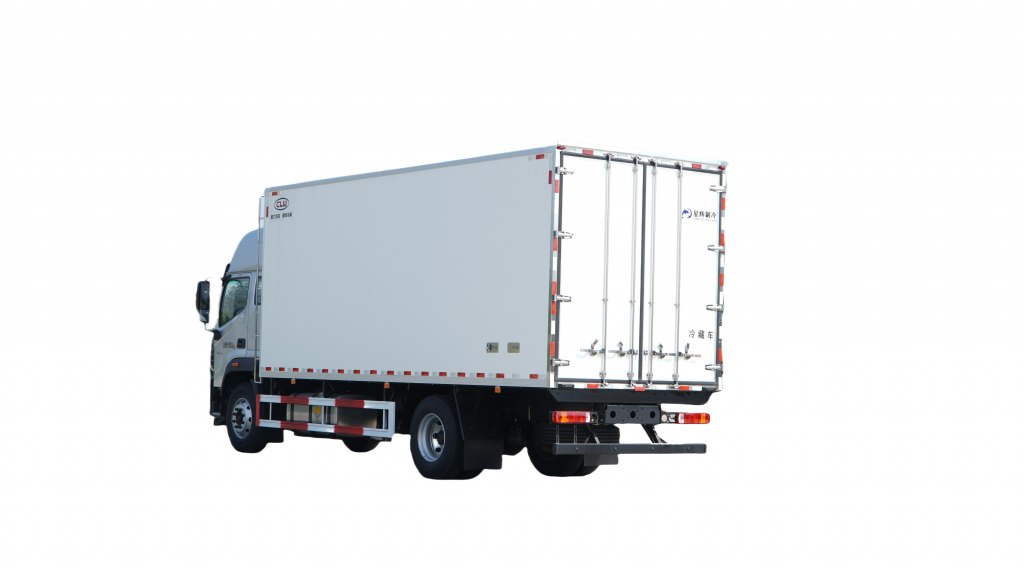Introduction
In today's world, waste management has become an increasingly critical issue as our population continues to grow, and consumption levels rise. One of the key components of efficient waste collection is the garbage truck hopper. This article will explore the various types of garbage truck hoppers, their functions, benefits, and how they are revolutionizing waste management practices.
Types of Garbage Truck Hoppers
Garbage truck hoppers come in a variety of designs and configurations to suit different waste collection needs. The most common types include:
1. Rear Loader Hopper: Rear loader hoppers are mounted at the back of the garbage truck and are typically used for residential waste collection. Workers load the waste into the hopper from the rear, and once full, the hopper is lifted and emptied into the truck's compactor.
2. Front Loader Hopper: Front loader hoppers are located at the front of the garbage truck and are commonly used for commercial waste collection. These hoppers are lifted by hydraulic arms and emptied into the truck's compactor.

3. Side Loader Hopper: Side loader hoppers are mounted on the sides of the garbage truck and are often used for collecting waste in narrow streets or areas with limited access. box truck load the waste from the side, and the hopper is emptied into the compactor.
4. Automated Hopper: Automated hoppers are equipped with robotic arms that can lift and empty waste bins into the truck's compactor without the need for manual labor. These hoppers are commonly used for residential waste collection in urban areas.
Functions of Garbage Truck Hoppers
Garbage truck hoppers play a crucial role in the waste collection process by facilitating the efficient loading and transport of waste to disposal sites. Some of the key functions of garbage truck hoppers include:
1. Waste Collection: Garbage truck hoppers are designed to hold and transport large quantities of waste from various sources, such as residential homes, commercial establishments, and public spaces.
2. Compaction: Many garbage truck hoppers are equipped with compactors that compress the waste to maximize the truck's carrying capacity. Compaction reduces the number of trips required to empty the truck, resulting in cost savings and increased efficiency.
3. Hygiene: Garbage truck hoppers are designed to contain and transport waste in a hygienic manner to prevent the spread of diseases and odors. Sealed hoppers help to minimize leakage and spillage during transport.
Benefits of Garbage Truck Hoppers
Garbage truck hoppers offer numerous benefits that contribute to the overall efficiency and effectiveness of waste management practices. Some of the key benefits include:
1. Increased Efficiency: Garbage truck hoppers streamline the waste collection process by enabling quick and easy loading and transport of waste. This results in faster collection times and reduced labor costs.
2. Cost Savings: Garbage truck hoppers with compactors help to reduce the volume of waste, allowing for more waste to be transported in each trip. This leads to lower fuel costs and fewer trips to disposal sites, ultimately saving money for waste management companies.
3. Environmental Impact: By maximizing the capacity of garbage trucks and reducing the number of trips required for waste collection, garbage truck hoppers help to minimize carbon emissions and reduce the overall environmental impact of waste transportation.
4. Improved Safety: Garbage truck hoppers are designed with safety features such as automated lifting mechanisms and secure locking systems to prevent accidents and injuries during the waste collection process.
5. Versatility: Garbage truck hoppers come in various sizes and configurations to accommodate different types of waste and collection needs. This versatility allows waste management companies to customize their collection processes based on specific requirements.
Revolutionizing Waste Management Practices
Garbage truck hoppers are revolutionizing waste management practices by introducing innovative technologies and designs that enhance efficiency, sustainability, and safety. Some of the ways in which garbage truck hoppers are driving this transformation include:
1. Automation: Automated garbage truck hoppers are equipped with sensors and robotic arms that can lift and empty waste bins with precision and speed. This automation reduces the need for manual labor and improves the overall efficiency of waste collection.
2. Smart Technology: Some garbage truck hoppers are integrated with smart technology systems that provide real-time monitoring of waste collection activities. These systems enable waste management companies to track collection routes, optimize schedules, and identify areas for improvement.
3. Sustainability: Garbage truck hoppers are being designed with sustainability in mind, using eco-friendly materials and energy-efficient components. Some hoppers are equipped with solar panels or hybrid engines to reduce fuel consumption and carbon emissions.
4. Data Analytics: Garbage truck hoppers are generating valuable data on waste collection volumes, routes, and efficiency metrics. By analyzing this data, waste management companies can make informed decisions to optimize their operations and reduce costs.
5. Integration with IoT: Garbage truck hoppers are increasingly being integrated with the Internet of Things (IoT) technology to enable real-time communication between trucks, hoppers, and central control systems. This integration improves coordination, reduces downtime, and enhances overall operational efficiency.
Conclusion
Garbage truck hoppers play a vital role in modern waste management practices by facilitating the efficient collection and transport of waste to disposal sites. With their diverse designs, functions, and benefits, garbage truck hoppers are revolutionizing the way waste is handled and contributing to a more sustainable and environmentally friendly future. As technology continues to advance, we can expect to see further innovations in garbage truck hopper designs that will further enhance the efficiency and effectiveness of waste management processes.
